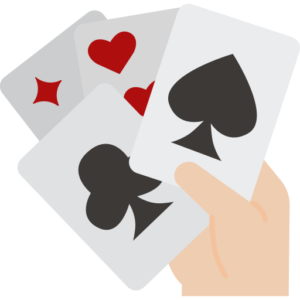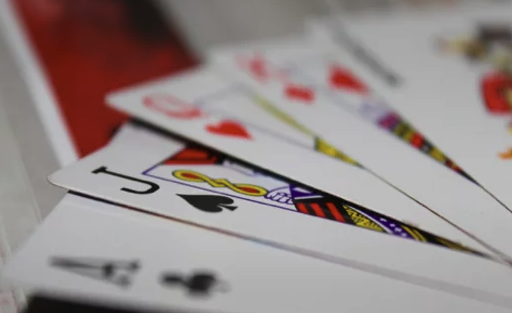Glossary Term
Button
Button
Used In: Poker
Introduction
In poker, the “button” is a small disc that marks the dealer's position at the table. This disc is crucial because it determines the order of betting in each hand. The player sitting on the button is always the last to act in each round of betting, which provides a strategic advantage. By having the most information about other players' actions, the player on the button can make more informed decisions, such as whether to bet, raise, or fold.
The button rotates clockwise around the table after every hand, ensuring that each player gets a chance to act from the button position. This rotation is a core aspect of the game, as it balances the advantage of acting last and prevents any player from being stuck in the same position too often. The button's movement also affects other key positions, such as the small blind and big blind, as those players' positions are determined relative to the button.
In many poker variants, particularly Texas Hold'em, the button's position has a direct impact on strategy. Players on the button can choose to play more hands, knowing they can act last in each betting round. As a result, understanding the button's role is vital for players looking to maximize their chances of success, as it influences both decision-making and overall gameplay strategy.
In Depth Look
The button in poker is a small disc used to mark the dealer position at the table. It’s important because it determines the order in which players act during each hand. The player sitting on the button is always the last to act in each round of betting, which provides a strategic advantage. This position allows the player to gather more information about their opponents’ actions before making a decision, whether to bet, raise, or fold. The player on the button can make more informed choices, often increasing the chances of success in the hand.
Each hand, the button rotates clockwise around the table, ensuring that every player has a chance to act from the dealer position. This rotation is important because it keeps the game fair and prevents any player from always having the advantage. The button's position also affects the small and big blinds, as those players' positions are determined based on where the button is. As a result, the button plays a crucial role in how players approach the game, shaping strategies such as bluffing, stealing blinds, and position-based aggression.
Key Points:
- The player on the button acts last in each betting round.
- The button rotates clockwise after each hand, giving all players a turn in the position.
- The button gives the player a strategic advantage, influencing bluffing and betting decisions.
Mechanics
The mechanics of the button in poker are simple but crucial to the flow of the game. At the start of each hand, the dealer places the button in front of one player, marking them as the “dealer” for that hand. The button rotates clockwise after every hand, ensuring each player takes turns in the position. The two players sitting immediately to the left of the button are responsible for posting the small blind and big blind, respectively, which are forced bets that initiate the action. The button player, however, does not post any blind bet and is typically the last to act in each betting round.
The advantage of being on the button comes from acting last in the betting rounds. As the final player to make a decision, the button player can observe how other players act before choosing whether to bet, raise, or fold. This information allows the button player to make more informed decisions and take advantage of weaker plays from opponents. The button's rotation also impacts the dynamics of each hand, as the small and big blinds shift positions with each new hand, maintaining a balance of fairness and ensuring that the positional advantage is spread around the table.


Illustrated Example
Imagine a poker game with five players: Alice, Bob, Charlie, David, and Emma. The button is placed in front of Alice, which means she is the dealer for this hand. Bob and Charlie are in the small blind and big blind positions, respectively, and they must post their forced bets. The rest of the players, David and Emma, are waiting to act. The action begins with the player to the left of the big blind, David, and it moves clockwise around the table. Since Alice is the dealer, she will act last in the betting rounds.
As the hand progresses, the players see their hole cards and start making decisions based on their hands. David raises the bet, and Emma calls. Bob, in the small blind, decides to fold, while Charlie, in the big blind, calls the raise. When it’s Alice’s turn to act, she has the advantage of seeing how the other players have responded. Based on this, Alice can either raise, call, or fold. Acting last, she has valuable information about the strength of her opponents' hands and can make a more informed decision compared to those acting earlier in the round.
After the first betting round, the dealer places the flop (three community cards) on the table. The action starts with Charlie, who is now first to act, since the button rotates clockwise after each hand. As the hand continues, Alice, acting last, gets to observe how the other players behave on the turn and river (the next two community cards). Thanks to her position on the button, Alice can now choose to make a more calculated decision based on what her opponents have done, increasing her chances of winning. When the hand concludes, the button moves clockwise to Bob, and the process repeats with a new round of blinds.
Key Points:
- The button player acts last in each betting round, observing opponents' actions before deciding.
- The button provides a strategic advantage in making more informed decisions.
- After each hand, the button rotates clockwise, changing the dealer and the positions of the small and big blinds.
Player Perspective
Sitting on the button in poker offers a significant advantage. Acting last in each round allows the button player to see how everyone else bets before making their decision. This can be particularly useful in determining whether to bluff, raise, or call. For example, if players before the button have made large bets, it may indicate they have strong hands, giving the button player more information to decide whether to fold or play. The ability to act last allows players to adjust their strategy based on the actions of others, leading to better decision-making and increased control over the hand.
Additionally, the button’s position impacts the player’s overall strategy throughout the game. Players on the button can afford to be more aggressive, attempting to steal blinds by making smaller raises when the players in the blinds are weak or hesitant. The button position also provides an opportunity to be more selective about the hands played, as it’s easier to fold poor hands knowing that acting last gives a higher chance to react to other players' decisions. This strategic flexibility makes the button one of the most powerful positions at the table.
Conclusion
In conclusion, the button is a critical element of poker, offering a strategic advantage to the player sitting in that position. Acting last in the betting rounds allows for more informed decision-making, whether it’s to bluff, raise, or fold based on the actions of other players. This position not only influences the flow of the hand but also shapes a player's overall strategy, providing opportunities for more aggressive plays and more selective decisions. As the button rotates around the table, every player gets a chance to experience its advantages, making it one of the most important positions in the game.
The Top Online Casinos for Playing Poker
These platforms prioritize player satisfaction by providing intuitive interfaces, seamless gameplay experiences, and robust security measures to ensure a fair and enjoyable environment for all users.


Author
Branimir Ivanov | Senior News Contributor







